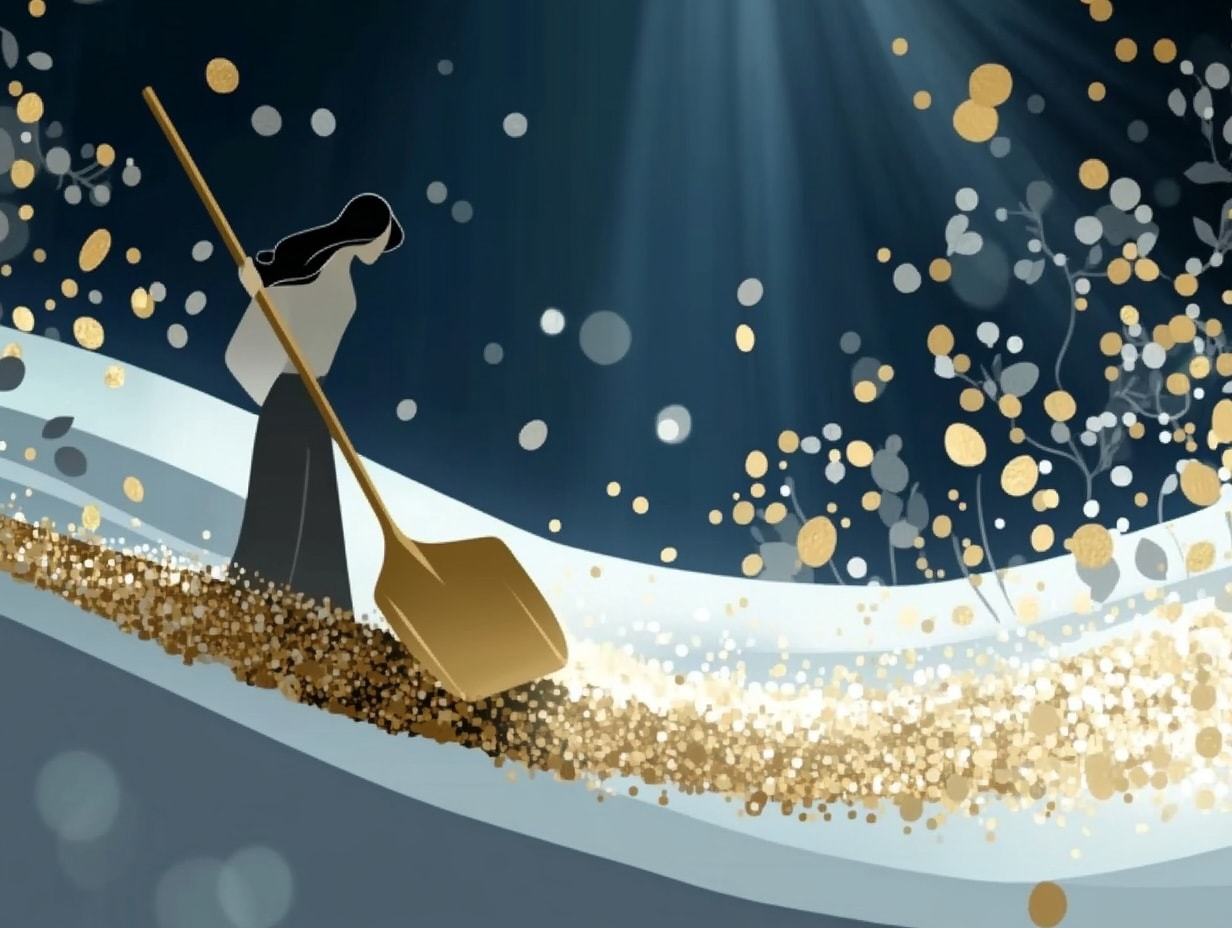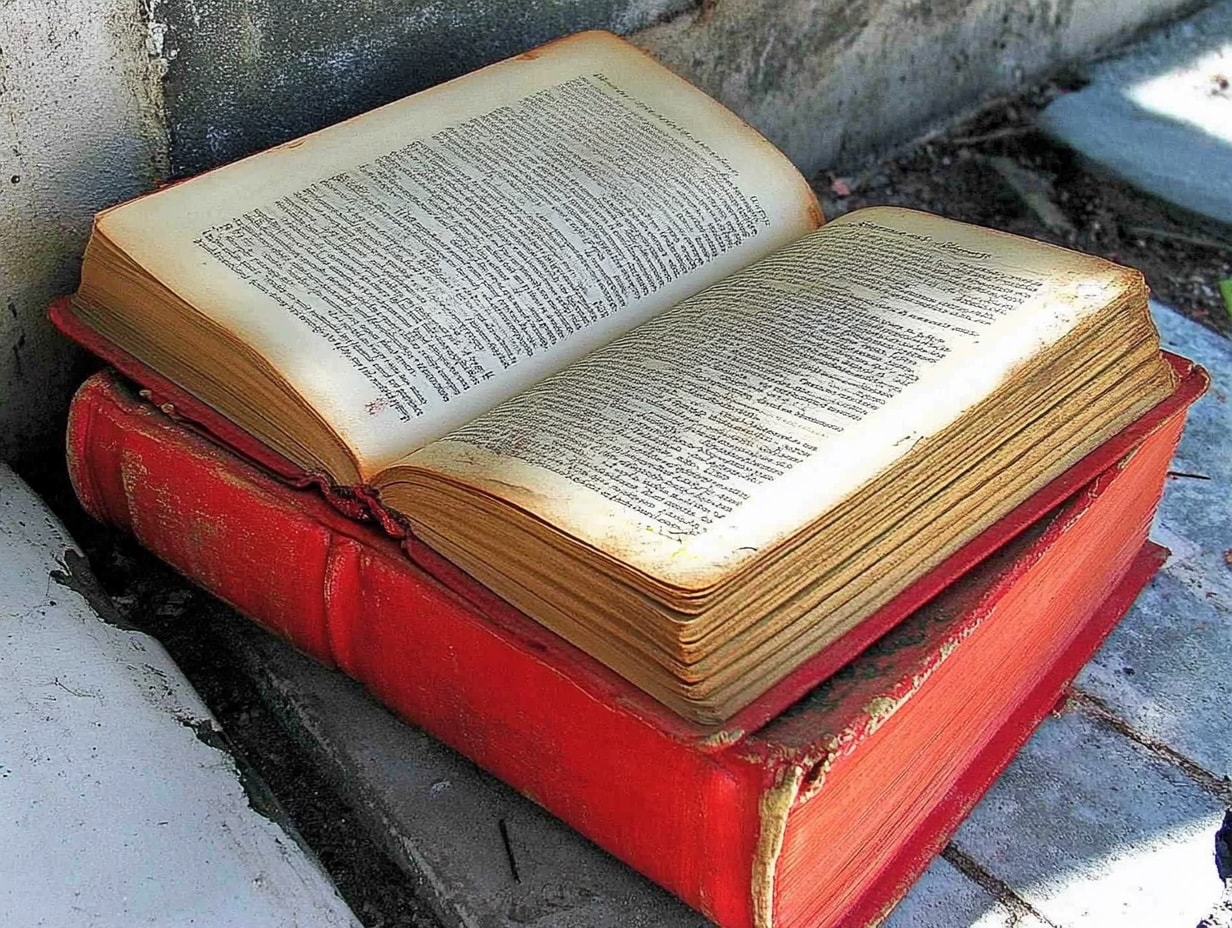
Mastering the Golden Shovel Poem:
A Practical Guide for Poets
Invented by Terrance Hayes, a golden shovel poem takes the last words of each line from another poem and uses them to end the lines of a new poem. This guide explores the origin of the form, how to write your own, and includes examples.
Key Takeaways
-
The Golden Shovel poetic form allows poets to creatively reinterpret influential works by using the last words of each line from a source poem.
-
Choosing an evocative source poem is key, as it shapes the emotional depth and structure of the new Golden Shovel poem.
-
This poetic form not only fosters individual expression but also creates a meaningful dialogue between contemporary and classic literature, celebrating the influence of past poets.
Understanding the Golden Shovel Poetic Form

The Golden Shovel poetic form was birthed from the creative genius of Terrance Hayes as a tribute to the iconic Gwendolyn Brooks’ poem “We Real Cool”. The beauty of this form lies in its simplicity and depth. The primary technique involves taking the last words of each line from a source poem and using them as the end words of each line in your new poem. This creates a unique structure where the new poem mirrors the original, yet speaks with its own voice.
The number of lines in a Golden Shovel poem is determined by the number of words in the selected line or stanza from the original poem. For instance, if you choose a line with five words, your Golden Shovel poem will have five lines, each ending with one of those words. Terrance Hayes masterfully demonstrated this in his poem “The Golden Shovel,” where he used every word from Brooks’ poem twice, showcasing a complex and layered approach.
Writing a Golden Shovel poem is more than a technical exercise; it’s an emotional journey. This form encourages poets to delve deep into their emotional connections with the source material, enhancing the creative process.
Breaking traditional rules and exploring unconventional structures allows poets to unlock new realms of expression. The Golden Shovel form offers a unique opportunity to pay homage to favorite writers while crafting something entirely new.
Steps to Craft a Golden Shovel Poem

Creating a Golden Shovel poem is a rewarding process that combines admiration for existing works with your own creative flair. The first step is to choose a short poem or a meaningful line that resonates with you. This source poem will provide the foundation for your Golden Shovel poem, with each word from the line becoming the end word of a line in your new piece.
Incorporate the last words of the lines from your chosen source poem to create the structure of your new poem. Whole poem visual aid not only helps in maintaining the form but also adds a layer of connection between the original and the new creations.
Finally, end each line of your new poem with the words from the source poem. Though seemingly straightforward, this step requires thoughtful crafting to ensure the new poem flows naturally and conveys its own message. The challenge lies in maintaining coherence and poetic beauty while adhering to the structural constraints of the Golden Shovel form.
Examples of Golden Shovel Poems

Understanding the potential of the Golden Shovel form is best achieved by exploring inspiring examples. Contemporary poets have embraced this form, showcasing a rich diversity of styles and themes. These examples illustrate how the Golden Shovel form can be a powerful tool for creative expression and homage.
For example, Robert Lee Brewer’s poem “Aging Well” is inspired by Basho’s work. Robert Lee Brewer uses the last words of Basho’s lines to craft his own poem, demonstrating the seamless blend of homage and innovation. This approach allows poets to honor their influences while creating something uniquely their own.
Another exemplary work is Terrance Hayes’ poem “The Golden Shovel”. In this poem, Hayes incorporates every word from Gwendolyn Brooks’ “We Real Cool,” using the Golden Shovel format to create a complex and layered piece. This anthology of Golden Shovel poems serves as a testament to the form’s versatility and the profound connections it can foster between poets and their sources.
Choosing the Right Source Poem
Choosing the right source poem is a crucial step in crafting a Golden Shovel poem. The line or stanza you choose will serve as the foundation of your new work, with each word becoming an end word in your poem. Ideally, the source poem should evoke strong emotions or themes, enhancing the impact of your new creation.
Consider the structure and word choice of the source poem, as these elements will shape your new poem’s form. A striking line that starts with a strong noun or verb can provide a solid base for your Golden Shovel poem. Using multiple words from a favorite poem encourages creativity and connection in the resulting piece.
The Golden Shovel form can be applied to various texts beyond traditional poetry, including song lyrics, news headlines, and book titles, offering diverse inspiration for poets. This flexibility allows you to experiment with different source materials and discover new ways to connect with and reinterpret the themes of your predecessors.
The Creative Challenge
One of the most exciting aspects of the Golden Shovel form is the creative challenge it presents. The new poem does not need to share the same theme or subject as the source poem, giving poets the freedom to explore different directions. This flexibility enables the creation of new works that are unique yet intricately connected to the original content.
Borrowing words from another poet can stimulate creativity and help combat writer’s block. If you find yourself stuck, try free writing techniques or set the poem aside for a few days before revisiting it. Taking breaks and returning with fresh perspectives enhances the creative process.
Golden Shovel poetry can also serve as a stimulating group activity. Participants can draw random lines of poetry and create their own Golden Shovels based on those selections, fostering a sense of collaboration and shared creativity. Balancing line lengths during editing enhances the visual appeal of your poem, making it more engaging for readers. Shorter lines from source poems can make the writing process more manageable and focused.
Resources for Golden Shovel Poets

Poets can turn to various resources to further explore and master the Golden Shovel form. Anthologies and collections serve as vital tools, offering insights and inspiration for crafting Golden Shovel poems. One notable resource is “The Golden Shovel Anthology,” edited by Patricia Smith, Peter Kahn, and Ravi Shankar, which includes over 300 poems inspired by Gwendolyn Brooks.
Robert Lee Brewer’s “The Complete Guide of Poetic Forms” is another excellent resource. This guide compiles examples and instructions for various poetic forms, including the Golden Shovel. It’s a valuable reference for poets looking to expand their repertoire and refine their skills.
Online resources like the Poetry Foundation, Poetry Society, and Poets.org offer further insights and examples of Golden Shovel poems. These platforms provide a wealth of information and inspiration, making them essential tools for poets at any stage of their creative journey.
Paying Homage Through Poetry

The Golden Shovel form is a profound way to pay homage to influential poets. When crafting a Golden Shovel poem, it’s essential to credit the original poet whose work inspired your creation. Acknowledging their influence is a crucial aspect of this poetic form.
Terrance Hayes’ use of Gwendolyn Brooks’ poem “We Real Cool” as a source for his Golden Shovel poem “The Golden Shovel” is a prime example of poems honoring Gwendolyn Brooks. This form allows poets to honor their predecessors and maintain a dialogue between contemporary and classic literature.
Holding two poems together in conversation is a significant effect of the Golden Shovel form. This connection fosters a sense of continuity and respect, bridging the gap between different generations of poets. By paying tribute through the Golden Shovel form, poets celebrate the enduring power of words and the lasting impact of their literary influences.
Summary
The Golden Shovel poetic form offers a unique blend of homage and innovation, allowing poets to create new works while honoring their literary influences. By understanding the form, selecting the right source poem, and embracing the creative challenges, poets can craft compelling Golden Shovel poems that resonate with readers.
Whether you’re a seasoned poet or a curious beginner, the Golden Shovel form provides a rich avenue for exploration and expression. Dive into this poetic journey, pay homage to your favorite writers, and transform their words into gold. The possibilities are endless, and the rewards are immeasurable.
Frequently Asked Questions
What is a Golden Shovel poem?
A Golden Shovel poem is a creative way to honor another poet by using the last words of their lines in your own poem. Embrace this unique form and let your creativity flow!
Who created the Golden Shovel form?
The Golden Shovel form, created by Terrance Hayes, honors Gwendolyn Brooks' poem "We Real Cool." Embrace this innovative style to add depth to your poetry!
How do I choose a source poem for a Golden Shovel poem?
Select a line from a poem that resonates with you emotionally; this will inspire your Golden Shovel poem. Remember, the right word choice and structure can transform your feelings into powerful new lines!
Can I use non-poetic texts for a Golden Shovel poem?
Absolutely! You can use non-poetic texts like song lyrics or headlines for your Golden Shovel poem, so get creative and let your imagination shine!
Where can I find resources to learn more about the Golden Shovel form?
To learn more about the Golden Shovel form, check out "The Golden Shovel Anthology," Robert Lee Brewer's "The Complete Guide of Poetic Forms," and explore resources on the Poetry Foundation website. Dive in and let your creativity flourish!




